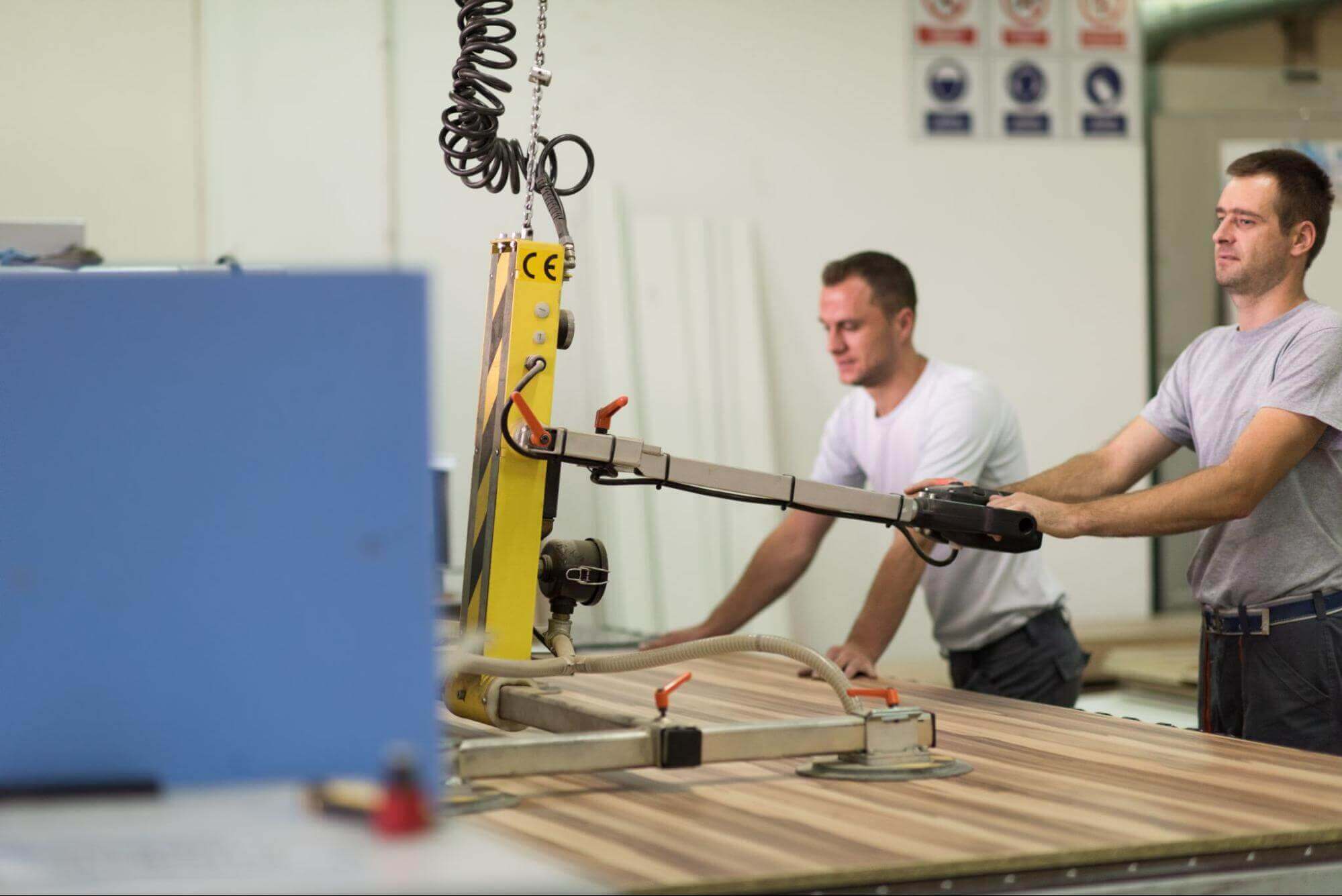What is industrial ergonomics?
Industrial ergonomics specializes in planning, organizing, and designing workspaces so that they are easy to use and promote safe and efficient working conditions. By considering elements such as posture, movement, lighting, noise, temperature, and fatigue, it seeks to create a healthy environment for workers.Fundamental principles of industrial ergonomics:
This discipline focuses on developing workstations, equipment and processes that improve people's safety, comfort and productivity. With this approach, industrial ergonomics integrates concepts from anthropometry, biomechanics, engineering design, psychophysiology and work environment design. Its objective is to optimize the efficient use of human strength and physical capabilities at work. In addition, it contributes to mitigating ergonomic risks related to physical effort, repetitive movements and overexertion, which can lead to musculoskeletal disorders (MSDs).Benefits of industrial ergonomics
The benefits derived from this discipline cover various aspects, including physical, occupational and psychological. Let's analyze the most important ones:Risk prevention
Industrial ergonomics is dedicated to reducing fatigue, discomfort, and stress through improvements in working conditions. This involves optimizing seating, proper lighting, and ease of use of tools and machinery. In addition, workers' physical characteristics, such as height, strength, and endurance, are considered. These combined approaches decrease the likelihood of workplace injuries and illnesses.Decrease in absenteeism
A key benefit of ergonomics in the industrial setting is the reduction of absences due to injury or illness. By providing well-designed work environments, the risk of injury is significantly reduced, resulting in less absenteeism. Industrial ergonomics also increases employee comfort and job satisfaction.Increase in production
Industrial ergonomics is becoming a crucial tool for companies seeking to optimize their productivity and efficiency. This is because it focuses on designing work environments and tasks that improve the safety and health of workers, while maximizing their performance. In addition to increasing comfort in the workplace, industrial ergonomics can help companies reduce costs and increase productivity in general.Types of industrial ergonomic products
Industrial ergonomic equipment ranges from ergonomic chairs, computer keyboards and mice to monitors and noise-protecting headphones. Industrial ergonomics also considers elements such as adequate lighting and ventilation, as well as adapting the work environment to the individual needs of workers. Here is a list of the essential ergonomic elements:- Ergonomic office chair
- Footrest
- Screen lifter
- Document holder
- Ergonomic keyboard
- Vertical mouse
- Sitting and standing workstation
- Anti-fatigue mat
Ergonomics tips for industrial work
Height adjustment
A fundamental principle of industrial ergonomics is to adjust the height of work chairs to allow the feet to rest comfortably on the floor or on a footrest. It is also essential that the elbows are aligned with the surface of the desk or work table.Screen and computer position
Placing the computer screen slightly below eye level is crucial to avoid neck and eye strain . In addition, it is important to adjust the screen brightness to protect workers' eye health.Hand and tool position
Placing the keyboard and mouse within easy reach of your hands prevents excessive strain on your limbs. This precaution helps prevent workplace hazards such as carpal tunnel syndrome and other related discomforts.Using wrist rests
Incorporating a wrist rest when using the keyboard or mouse provides additional support and comfort, reducing the risk of fatigue, injury and discomfort in computer work environments.Regular breaks
Taking 5-minute breaks every hour during repetitive tasks is essential to minimise the risk of injury. Maintaining proper posture is also essential to prevent possible physical discomfort or pain.Adapted storage systems
Industrial ergonomics also encompasses storage systems designed from this perspective, facilitating quick access to commonly used objects and improving efficiency in carrying out tasks.Adequate lighting
Lighting is a key aspect of industrial ergonomics, as it contributes to a more comfortable, productive and safe working environment. In addition to the choice of light sources, this discipline involves the use of lighting control systems.By following these simple guidelines, it is possible to create a work environment with industrial ergonomics that promotes employee safety, comfort and productivity in a variety of work contexts.

Share:
Percussion massage: What it is used for and its main advantages
Hag Capisco: an ergonomic choice of Norwegian design